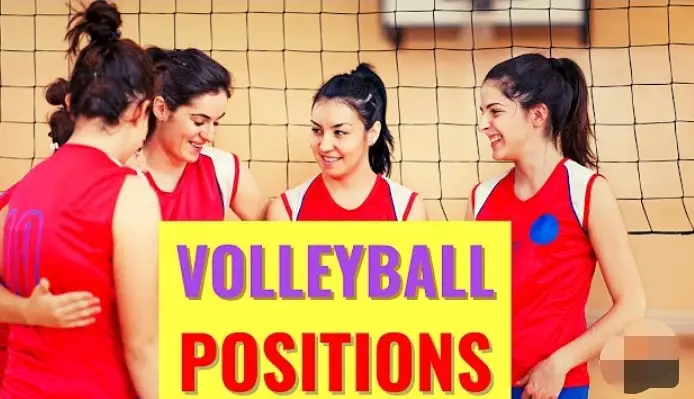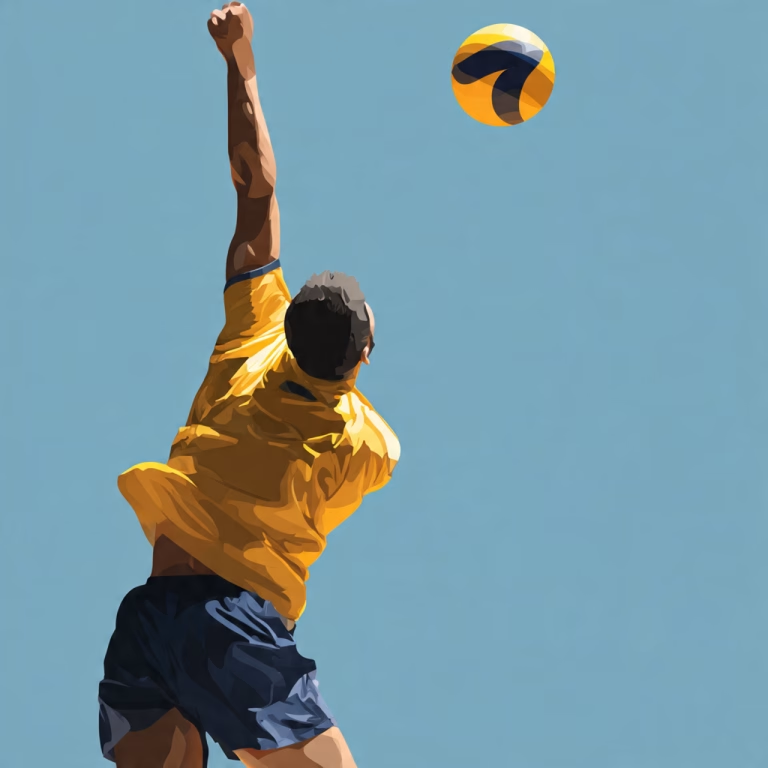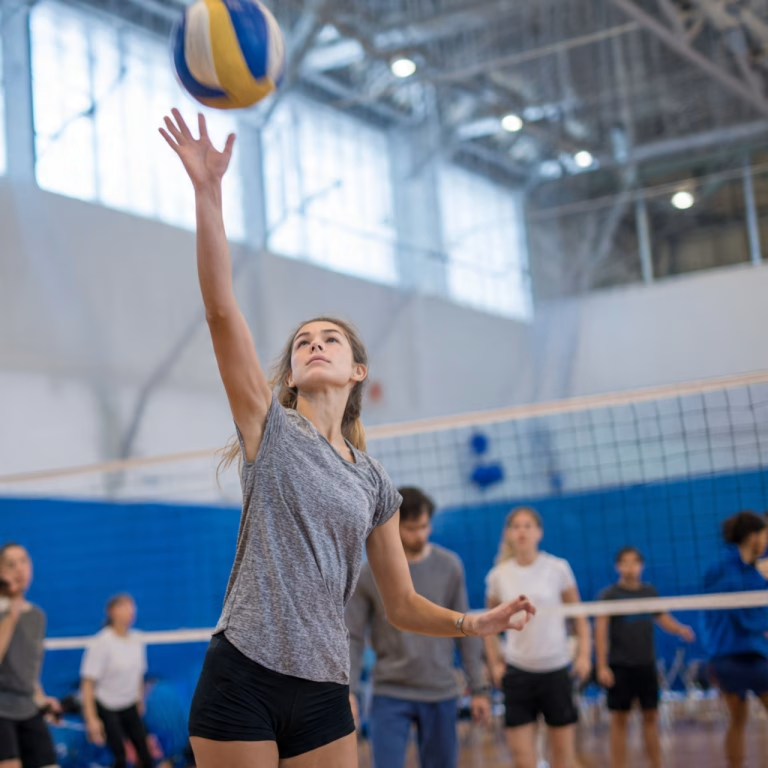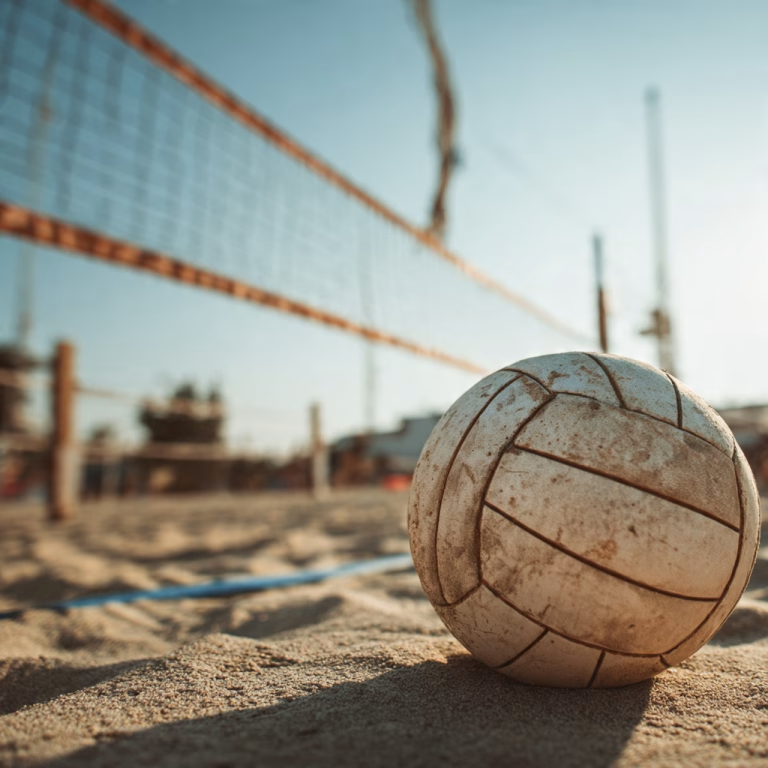Volleyball is one of the most exciting and fun sports. What makes this game so interesting? One of the key points is the position of the players. Each volleyball player on the court is guided by his own position and is busy with very specific work. In this article, we will look at the best position in volleyball.

Best Position in Volleyball

Interestingly, the best positions and roles on a volleyball team as far as their overall impact on the team’s success are:
- Setter
- Libero
- Hitter
- Defensive Specialist
1. Setter: Best Position in Volleyball
The setter is often regarded as the best (and most important) position in a volleyball game, responsible for orchestrating the team’s offensive strategies.
With a keen eye for court positioning and an innate ability to read the game, the setter’s primary role is to deliver precise and well-timed sets to their teammates, enabling them to execute powerful attacks.
As the setter, you must possess exceptional ball-handling skills, quick reflexes, and a deep understanding of your teammates’ strengths and tendencies. The setter’s ability to anticipate the flow of the game and make split-second decisions will determine the success of your team’s offensive plays.
See Also:
- Volleyball Positions Chart: A Comprehensive Guide for Players
- Volleyball Positions Diagram: Roles and Responsibilities (2024 updated)
Setter Responsibilities:
- Receive the second ball and set it up for the hitters
- Distribute the ball evenly among the hitters
- Communicate effectively with teammates to coordinate offensive strategies
- Possess a diverse repertoire of sets, including front, back, and shoot sets
- Demonstrate excellent court awareness and positioning
2. Libero: Second Best Position In Volleyball After Setter
The libero is widely considered the second-best volleyball position after the setter as the defensive anchor of the team. Libero position player solely responsible for the art of receiving and digging. Donning a contrasting jersey, the libero’s role is to provide a solid defensive foundation, ensuring that every attack from the opposing team is met with unwavering determination and skill.
As the libero, you must possess lightning-fast reflexes, exceptional court coverage, and an unwavering commitment to keeping the ball in play. Your ability to read the game and anticipate the opponents’ attacks will be the difference between a successful rally and a lost point.
Libero Responsibilities:
- Specialize in defensive skills, such as digging and receiving
- Provide a reliable passing target for the setter
- Cover the court with agility and anticipation
- Communicate effectively with teammates to coordinate defensive strategies
- Demonstrate excellent court awareness and positioning
3. Outside Hitter: Third Best Position in Volleyball After Libero
The outside hitter is the third-best volleyball position, responsible for directing the offensive powerhouse of the team and delivering thunderous attacks that leave the opposition scrambling. With a combination of explosive vertical leaps, powerful arm swings, and pinpoint accuracy, the outside hitter is often the go-to player for scoring points and igniting the team’s momentum.
As an outside hitter, you must possess a well-rounded skill set that encompasses spiking, serving, and defensive abilities. Your ability to read the game, anticipate the set, and execute a variety of attacks will keep the opposing team guessing and create scoring opportunities for your team.
Outside Hitter Responsibilities:
- Execute powerful and accurate attacks from the left and right sides
- Serve effectively to disrupt the opponent’s offense
- Provide defensive support when not attacking
- Communicate effectively with teammates to coordinate offensive strategies
- Demonstrate excellent court awareness and positioning
4. Middle Blocker: Fourth Best Position in Volleyball After Outside Hitter
The middle blocker is the fourth-best position in volleyball as the defensive wall of the team, tasked with shutting down the opponents’ attacks and creating scoring opportunities through well-timed blocks and quick attacks.
With a combination of vertical leap, timing, and court awareness, the middle blocker plays a pivotal role in both offensive and defensive strategies.
As a middle blocker, you must possess exceptional jumping ability, quick reflexes, and a keen understanding of the game’s tempo. Your ability to read the opposing hitters’ tendencies, anticipate their attacks, and execute precise blocks will be the difference between a successful defensive stand and a scored point for the opposition.
Middle Blocker Responsibilities:
- Execute effective blocks against the opponents’ attacks
- Provide a quick and powerful offensive threat with slide and back-row attacks
- Communicate effectively with teammates to coordinate defensive strategies
- Demonstrate excellent court awareness and positioning
- Contribute to the team’s serving and defensive efforts
The Opposite Hitter: The Versatile Threat
The opposite hitter is a versatile and dynamic player who can seamlessly transition between offensive and defensive roles. Often positioned on the right side of the court, the opposite hitter serves as a formidable attacking threat while also providing valuable defensive support.
As an opposite hitter, you must possess a well-rounded skill set that encompasses spiking, blocking, and serving abilities. Your ability to read the game, anticipate the set, and execute a variety of attacks from different angles will keep the opposing team guessing and create scoring opportunities for your team.
Opposite Hitter Responsibilities:
- Execute powerful and accurate attacks from the right side
- Provide effective blocking support against the opponents’ attacks
- Serve effectively to disrupt the opponent’s offense
- Communicate effectively with teammates to coordinate offensive and defensive strategies
- Demonstrate excellent court awareness and positioning
FAQs
What is the best position in volleyball?
While each position plays a crucial role in the success of a volleyball team, the setter is often considered the best (and most important) position. As the orchestrator of the offense, the setter’s ability to distribute the ball effectively and create scoring opportunities for their teammates is paramount. However, it’s important to note that volleyball is a team sport, and every position contributes significantly to the overall success of the team.
Can a player switch positions during a game?
Yes, players can switch positions during a game, although it is not a common practice. Switching positions may occur due to various reasons, such as injuries, strategic adjustments, or player rotations. However, it’s important to note that certain positions, like the libero, have specific rules and restrictions regarding substitutions and court positioning.
How do players communicate effectively on the court?
Effective communication is crucial in volleyball, and players use a combination of verbal and non-verbal cues to coordinate their actions. Verbal communication includes calling out plays, providing feedback, and encouraging teammates. Non-verbal communication involves hand signals, body language, and court positioning. Additionally, players often develop a shared understanding and chemistry through practice and experience, allowing them to anticipate each other’s movements and intentions.
What skills are essential for each volleyball position?
While each position requires a unique set of skills, some essential skills are common across all positions. These include:
- Setter: Ball-handling, decision-making, court awareness
- Libero: Defensive skills, agility, court coverage
- Outside Hitter: Spiking, serving, defensive skills
- Middle Blocker: Blocking, quick attacks, vertical leap
- Opposite Hitter: Versatility, offensive and defensive skills
How important is court positioning in volleyball?
Court positioning is extremely important in volleyball. Proper positioning allows players to maximize their strengths, cover their defensive responsibilities, and create scoring opportunities. It also facilitates effective communication and coordination among teammates. Mastering court positioning is essential for executing successful offensive and defensive strategies.
Final Take (Conclusion)
Knowing the best volleyball positions is crucial for volleyball players. Each position demands a unique set of skills and responsibilities, yet they all contribute to the seamlessness and beauty of the game on the court.
The best positions in volleyball are:
- Setter
- Libero
- Hitter
- Middle blocker or defensive specialist
Whether you’re a setter orchestrating the offense, a libero anchoring the defense, or a hitter delivering thunderous attacks, embracing your role and honing your skills is the key to elevating your game and your team’s performance.
Remember, volleyball is a team sport, and success hinges on the collective efforts of all players. Effective communication, court awareness, and a willingness to support your teammates are essential for creating a cohesive and formidable unit.
If you continue to refine your skills and deepen your understanding of these positions in volleyball, you’ll unlock new levels of performance and enjoyment in this exhilarating sport.
See Also:
- Texas Volleyball Head Coach Jerritt Elliott Secures Contract Extension to 2029
- Harper Murray: Bio, Age, Stat and Career 2024
- Volleyball Nations League (VNL) Invites Bids for 2025-2027 Hosting Rights as Global Interest Surges
- Volleyball Positions Chart: A Comprehensive Guide for Players
- Middle School Volleyball Rules (2024 Updated)




